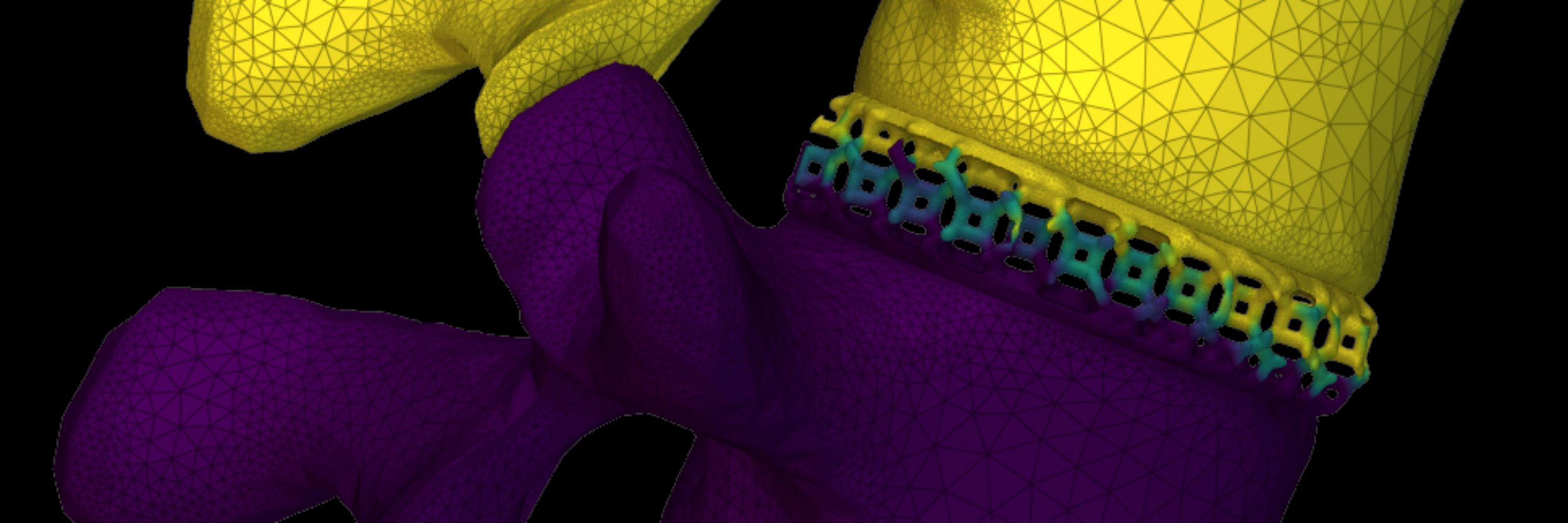
Two novel methods to represent IAP in rigid body dynamics
Inclusion of nonlinear ligament, muscle, and disc behaviors
Model validated against in vivo, ex vivo, and in silico datasets
Open-source MATLAB implementation for broader accessibility
Two novel methods to represent IAP in rigid body dynamics
Inclusion of nonlinear ligament, muscle, and disc behaviors
Model validated against in vivo, ex vivo, and in silico datasets
Open-source MATLAB implementation for broader accessibility
GitHub Repository: github.com/siril-teja/R...
GitHub Repository: github.com/siril-teja/R...
1. Open-source: anyone can print these models and use them for spine testing. Or buy from us and support the research @ simcare.tech
2. Fully 3D printable
3. Stiffness tunable to patient biomechanics
4. Cheap
Paper 1: www.doi.org/10.1186/s412...
Paper 2: www.doi.org/10.1007/s422...
1. Open-source: anyone can print these models and use them for spine testing. Or buy from us and support the research @ simcare.tech
2. Fully 3D printable
3. Stiffness tunable to patient biomechanics
4. Cheap
Paper 1: www.doi.org/10.1186/s412...
Paper 2: www.doi.org/10.1007/s422...
Any plans to introduce flexible bodies? We are building a similar model focused on spine and speed. bsky.app/profile/biom...
Doing some HIL testing with actual hardware in Dec.

Any plans to introduce flexible bodies? We are building a similar model focused on spine and speed. bsky.app/profile/biom...
I've also been teaching a graduate course, "MECH 561 - Intro to MSK Biomechanics" these past two semesters and have been really enjoying the teaching side of things.
I've also been teaching a graduate course, "MECH 561 - Intro to MSK Biomechanics" these past two semesters and have been really enjoying the teaching side of things.
Doing some HIL testing with actual hardware in Dec.

Doing some HIL testing with actual hardware in Dec.
The solution might be lattices!

The solution might be lattices!


